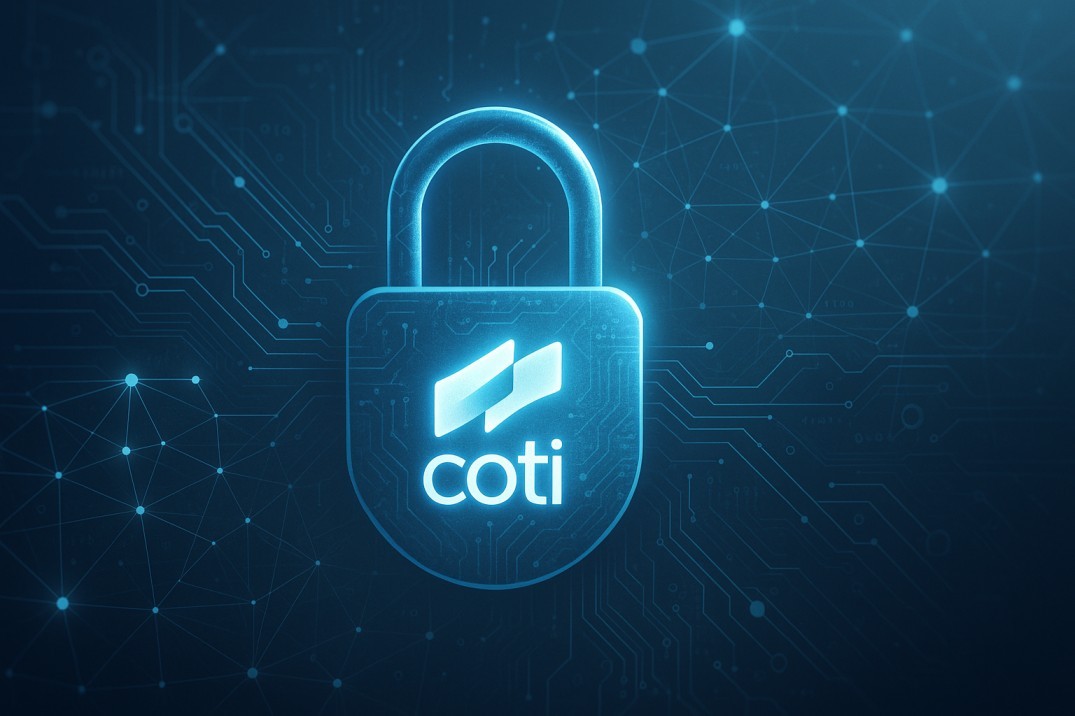TL;DR
- As public blockchains face increasing regulatory and privacy pressures, COTI is pioneering a path that balances confidentiality with compliance.
- COTI V2 uses Garbled Circuits (GC) to enable private computations on encrypted data, while still permitting selective auditability.
- In performance benchmarks, COTI's GC solution outpaces many alternatives by orders of magnitude.
- This architecture allows institutions, governments, and sensitive applications to use blockchain without exposing secret data or violating rules.
- COTI's approach may become the blueprint for the next generation of privacy layers - not hiding from oversight, but operating with oversight built in.
The promise of blockchain has always carried tension: complete transparency for trust, yet privacy for individuals and institutions. Over time, that tension has grown more acute. Public chains expose everything; pure privacy coins face regulatory backlash; many enterprises hold back due to fear of exposure or noncompliance. The real quiet revolution is not about erasing data or creating impenetrable vaults. It's about giving control: making privacy a programmable, optional layer rather than a binary yes/no choice. COTI is at the forefront of that revolution.
In this article, we will explore how COTI is redefining privacy without breaking rules. We'll compare traditional privacy approaches, dive into COTI's cryptographic architecture, examine its performance claims, and highlight why its design could become indispensable for regulated Web3 adoption.
The Limits of Previous Privacy Models
Privacy Coins: Total Obscurity, Total Risk
Monero, Zcash, and other anonymity-first projects aimed to shield users completely. But regulators saw that as an open door for illicit finance. Countries delisted or banned privacy coins. Exchanges flagged them. The tradeoff was stark: total privacy at the cost of market access.
Zero-Knowledge Proofs: Elegant but Constrained
Zero-knowledge systems allow specific statements to be proven without revealing underlying data. They're powerful, but many ZK systems struggle when handling multi-party, encrypted logic beyond simple proofs. They often face high computational overhead or scaling constraints in real-world settings.
COTI's New Path: Privacy Beyond Secrecy

To solve this, COTI adopted a different approach. Rather than hiding everything, they built a system where privacy is contextual, auditability is controlled, and computation remains efficient.
Garbled Circuits: Encrypted Logic, Private Inputs
COTI V2's core privacy engine is based on Garbled Circuits (GC). In secure multi-party computation, a GC allows parties to jointly compute a function on private inputs without revealing those inputs or intermediate steps. The only thing revealed is the result. (See COTI's docs on GC)
In practical terms, COTI's GC implementation lets smart contracts run on encrypted values, hidden from public view, while maintaining correctness and auditability for trusted parties.
Selective Disclosure: Privacy on Demand
Privacy under COTI is not blanket. As leaders in the project put it, the system enables selective disclosure. Some data stays encrypted forever; other data can be revealed only to those who are permitted. This means a regulator or auditor might see a necessary piece of data, without exposing everything.
Because of this, COTI avoids the extremes of full transparency or ungovernable opacity. It creates a middle path.
Technical Differentiators & Performance

Efficiency and Benchmarking
COTI doesn't just promise privacy - it backs it with speed and efficiency. In benchmarking, COTI's GC solution dramatically outperforms many alternatives. Its garbled circuits operate with extremely low latency and computational load. In one comparison, COTI's GC layer performed between 1,800× and 3,000× faster than a leading Fully Homomorphic Encryption (FHE) solution in logic operations.
Its storage overhead is also significantly lighter - using compact ciphertext sizes that make it viable for real-world usage on devices and chains where resources are constrained. Another article describes that GC had previously been viewed as impractical for blockchains due to its resource demands, but COTI's breakthrough eliminated many inefficiencies around communication and optimized computation paths.
Multi-Party Computation & Advanced Use Cases
Unlike many privacy designs that focus on one-to-one proofs, COTI's GC supports multi-party operations. This opens up applications like confidential voting, private DEX order matching, confidential auctions, and more - where many actors interact with private state.
That's a significant advantage over some ZK systems which struggle with multi-party logic in an efficient way.
Compliance by Design
One of COTI's biggest selling points is that it balances privacy with accountability - a must for regulated institutions, governments, and enterprises.
Auditability Without Exposure
Because computations are encrypted but verifiable, COTI allows selective audits: only the data essential for compliance or dispute resolution need be exposed to authorized entities. The rest remains sealed. This is a fundamentally different approach from blind privacy.
Institutional & Government Use Cases
COTI's system appeals to regulators and institutions. For example, in launching its V2 mainnet, COTI explicitly targeted enterprises requiring "privacy-on-demand" - the option to disclose or conceal with precision.
In interviews, COTI has contrasted its approach with full anonymity systems, arguing that completely anonymous transactions are too risky in regulated contexts. Its selective disclosure model is engineered precisely to be acceptable to oversight while retaining user confidentiality.
The Launch & Transition
COTI's journey to this architecture involved major transitions. Earlier versions relied on DAG or alternative structures, but the shift to EVM-compatible L2 with GC privacy is a bold pivot. That transition allows existing Ethereum tools, developers, and interoperability to be leveraged while embedding the privacy layer.
With mainnet V2 now live, COTI positions itself as a confidential L2 - not just another privacy coin, but a foundational privacy overlay that can be adopted by chains, dApps, and institutions.
The Wider Impact: Why COTI's Approach Matters
Enabling Real-World Adoption
Enterprises, governments, banks, and regulated financial systems are unlikely to adopt systems that offer outright secrecy. COTI's privacy model gives them a bridge - confidentiality where needed, accountability where demanded.
Bringing Privacy Into Web3 Infrastructure
Rather than privacy being an optional add-on, COTI treats it as a core infrastructure piece. This shift means future dApps, identity systems, DeFi protocols, and real-world asset platforms can begin with privacy built in, not bolt it on.
Standing Out Among Privacy Projects
Many privacy projects struggle with regulatory pressure or performance constraints. COTI's hybrid approach positions it uniquely: it doesn't oppose oversight; it designs to live within oversight, as a privacy-enabling infrastructure that regulators, users, and institutions can trust.
Challenges & Considerations
Even with this architecture, challenges remain:
- The cryptographic complexity is high: garbled circuits, oblivious transfer, secure computation - all intricate systems that demand rigorous engineering and security review.
- Interoperability: integrating with other chains, legacy systems, or cross-chain communication introduces weak links that may expose data.
- Governance & policy: defining under what conditions disclosure is allowed, who can request it, and how transparency agreements are enforced is delicate.
- Adoption inertia: many dApps, wallets, and systems are built on transparency-first models. Transitioning mental models and codebases to privacy-first abstractions will take time.
COTI must continuously prove that its architecture is secure, performant, and compatible with real-world regulatory regimes.
Final Thoughts
We tend to view revolutions as loud - upheaval, disruption. But COTI's revolution is quiet. It isn't about defying rules or hiding from them. It's about redefining how we think about privacy and trust in regulated systems. By embedding encrypted computation, selective disclosure, and audit-friendly design into blockchain architecture, COTI provides a path where confidentiality and compliance can co-exist.
In an era when privacy is demanded but regulation is unavoidable, COTI may well be writing the next blueprint. It's not a battle cry; it's a bridge.











